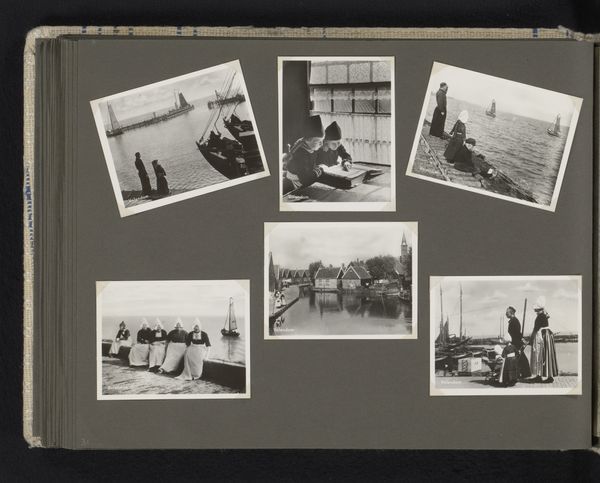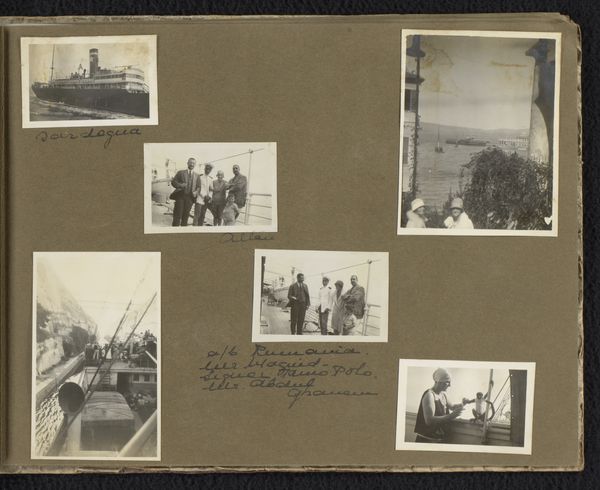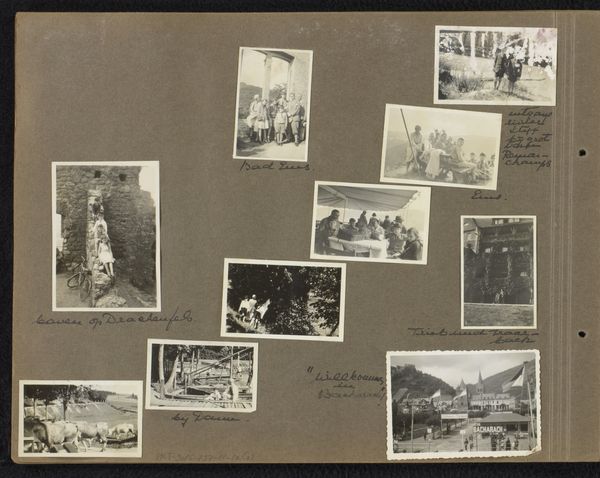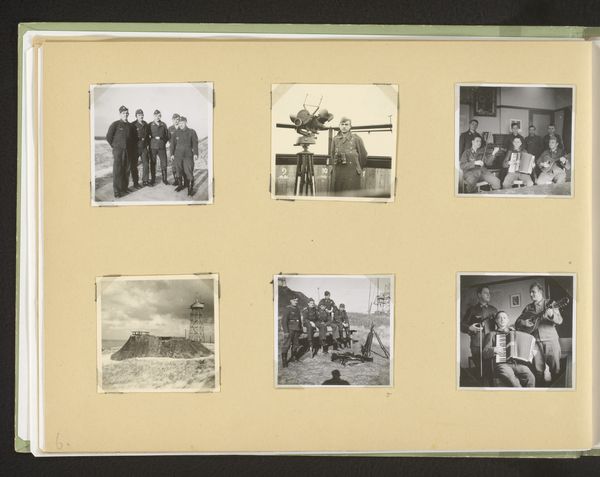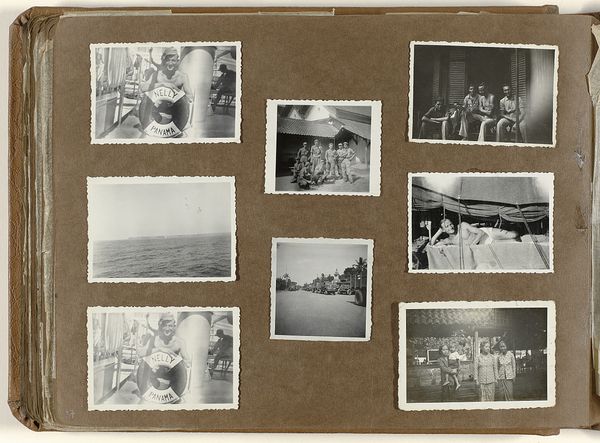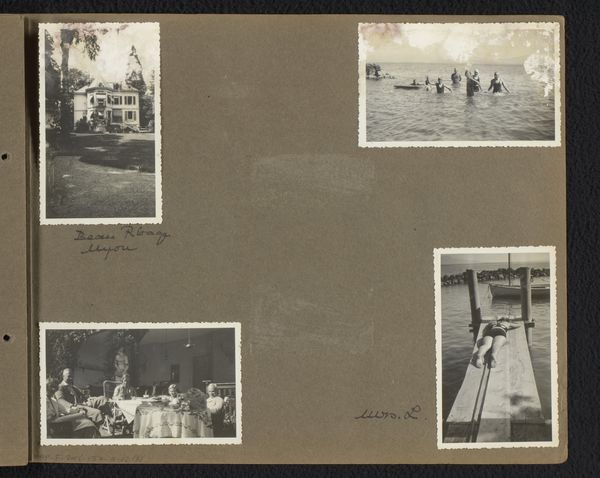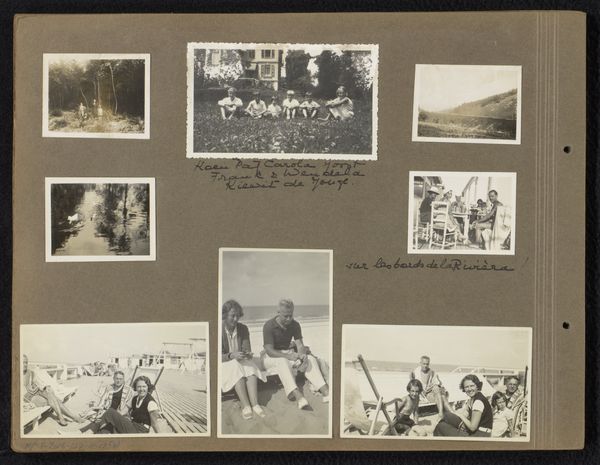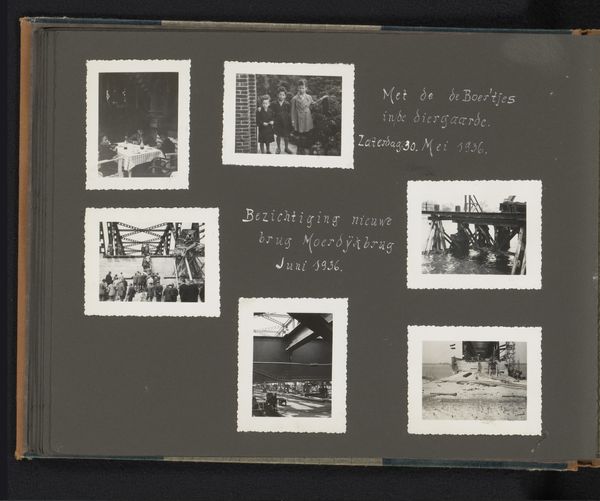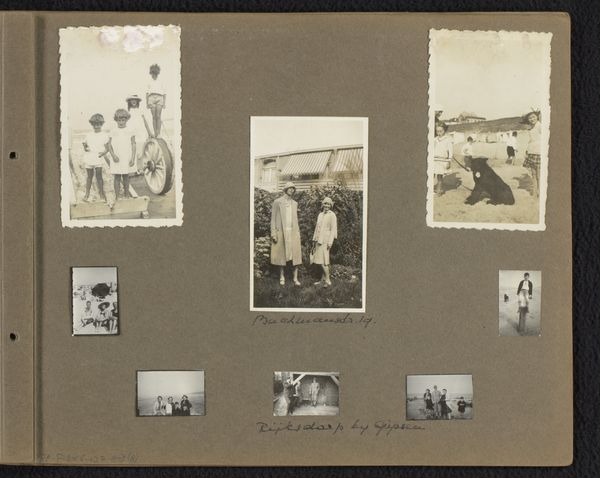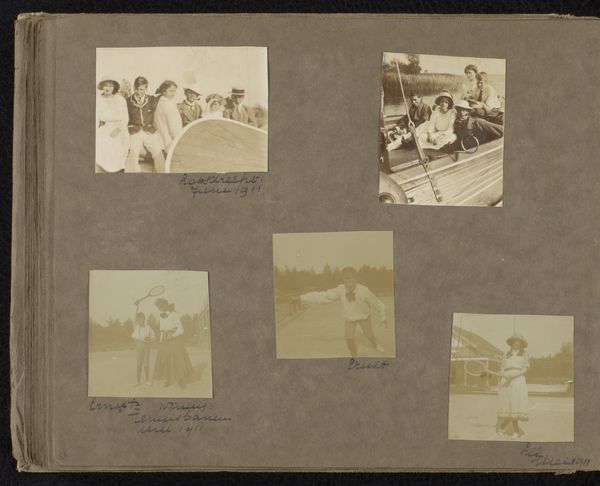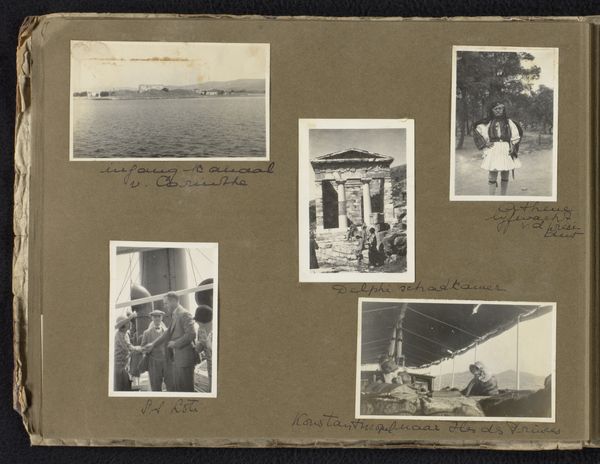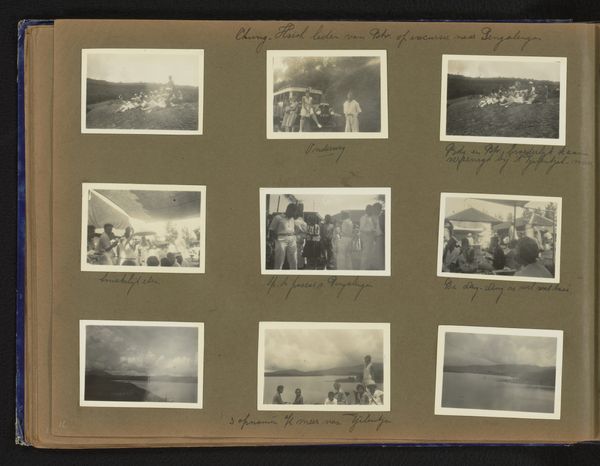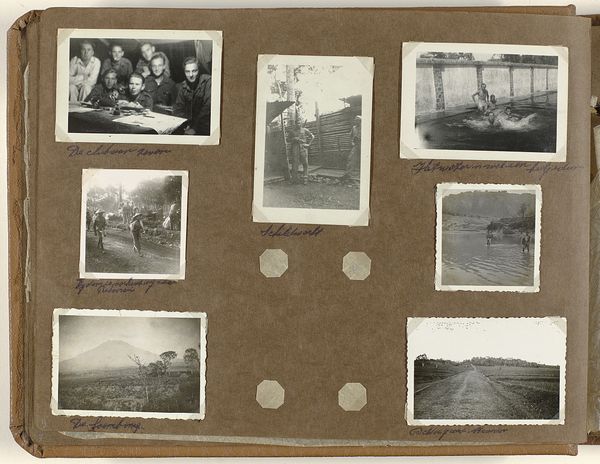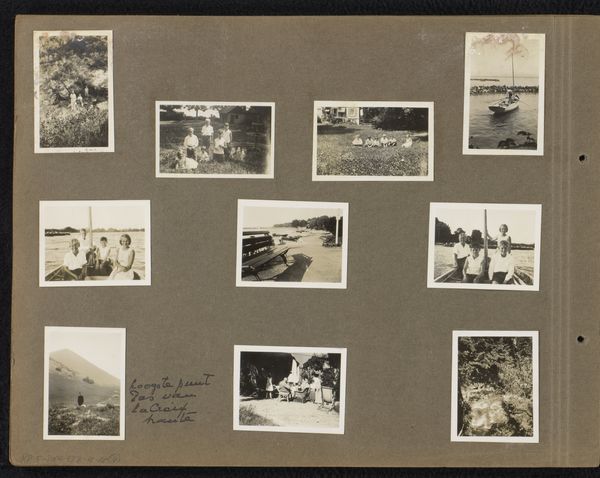![Loentje Furnée met vrienden en kinderen op het strand van Noordwijk, met Piet van Ostrop, Jeanne Kessler en Kay Liefter [?] by Carolina (Loentje) Frederika Onnen](/_next/image?url=https%3A%2F%2Fd2w8kbdekdi1gv.cloudfront.net%2FeyJidWNrZXQiOiAiYXJ0ZXJhLWltYWdlcy1idWNrZXQiLCAia2V5IjogImFydHdvcmtzLzdmNWY4NjlmLTFhYTEtNDQxZi1iZmY3LTUwYTA5ODk4MWI0ZS83ZjVmODY5Zi0xYWExLTQ0MWYtYmZmNy01MGEwOTg5ODFiNGVfZnVsbC5qcGciLCAiZWRpdHMiOiB7InJlc2l6ZSI6IHsid2lkdGgiOiAxOTIwLCAiaGVpZ2h0IjogMTkyMCwgImZpdCI6ICJpbnNpZGUifX19&w=3840&q=75)
Loentje Furnée met vrienden en kinderen op het strand van Noordwijk, met Piet van Ostrop, Jeanne Kessler en Kay Liefter [?] 1930
0:00
0:00
photography, gelatin-silver-print
#
portrait
#
photography
#
group-portraits
#
gelatin-silver-print
#
genre-painting
#
modernism
Dimensions: height 260 mm, width 325 mm
Copyright: Rijks Museum: Open Domain
Editor: This gelatin-silver print, dated 1930, is titled "Loentje Furnée met vrienden en kinderen op het strand van Noordwijk, met Piet van Ostrop, Jeanne Kessler en Kay Liefter." It feels like a casual family album, a snapshot of a day at the beach, and its being part of a larger album is important I think. What strikes you about it? Curator: I am particularly drawn to the material reality of this work. It's not just a photograph, but a gelatin silver print. Think about what that means in terms of production. Someone had to meticulously coat paper, expose it to light, and develop it in a darkroom. Editor: Right, a whole process! It's easy to forget with digital photography today. Curator: Exactly! And consider the social context. These are not posed studio portraits, but rather glimpses into the leisure activities of, presumably, middle-class families in the interwar period. How does the informality of the composition change the way we perceive it? Editor: It definitely makes it feel more personal and authentic, less staged than something like formal society portraits from that period. Curator: Think about the materials beyond just the photograph itself – the swimsuits, the beach chairs, even the sand. All of these point to a specific moment in time, to changing ideas about leisure and the body. Mass produced goods enabled moments of leisure previously available only to an elite to trickle down to a broader population, especially here in the Netherlands. Editor: That makes so much sense. It's easy to look past the material culture of these pictures and focus on the people. It’s the tangible elements surrounding the subjects that situate the work within its era, isn't it? Curator: Precisely! By examining the materials and the means of production, we gain a deeper understanding of the society that produced this photograph. Editor: Thanks, I learned how we can view even seemingly simple snapshots as complex historical objects just by examining them through their material components! Curator: My pleasure! This perspective really highlights the significance of process, labor and social consumption for how we understand an artwork.
Comments
No comments
Be the first to comment and join the conversation on the ultimate creative platform.
